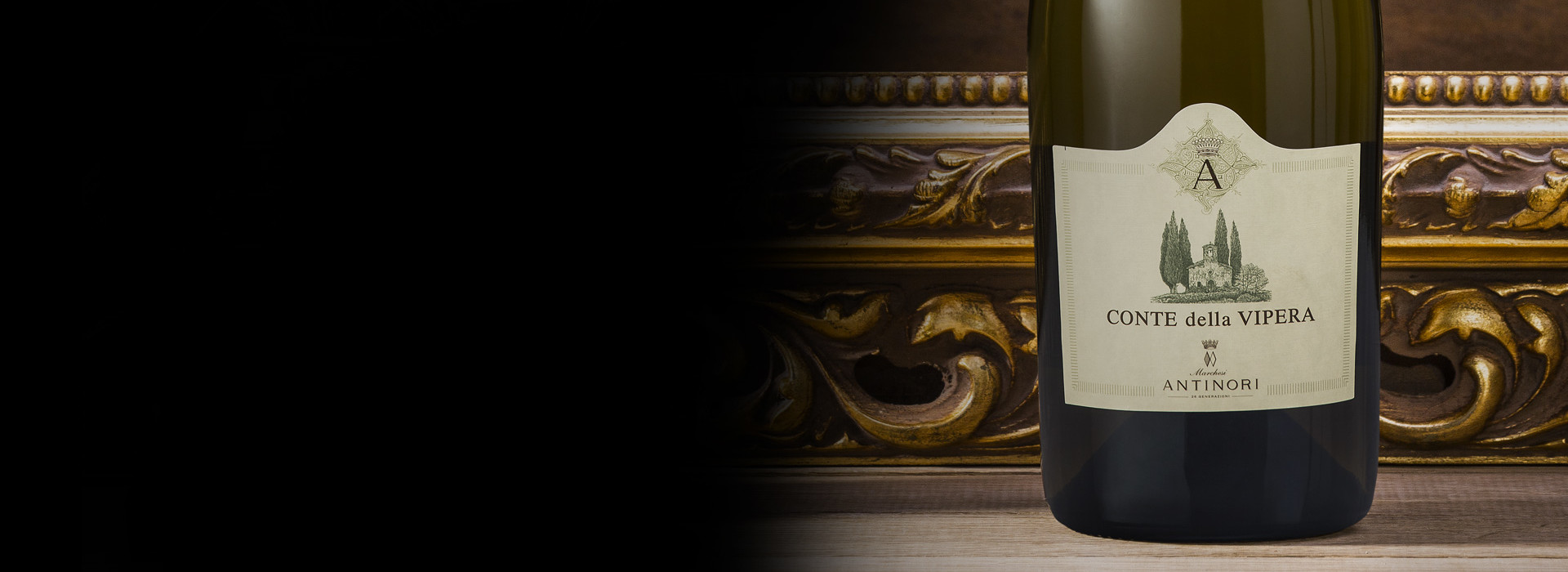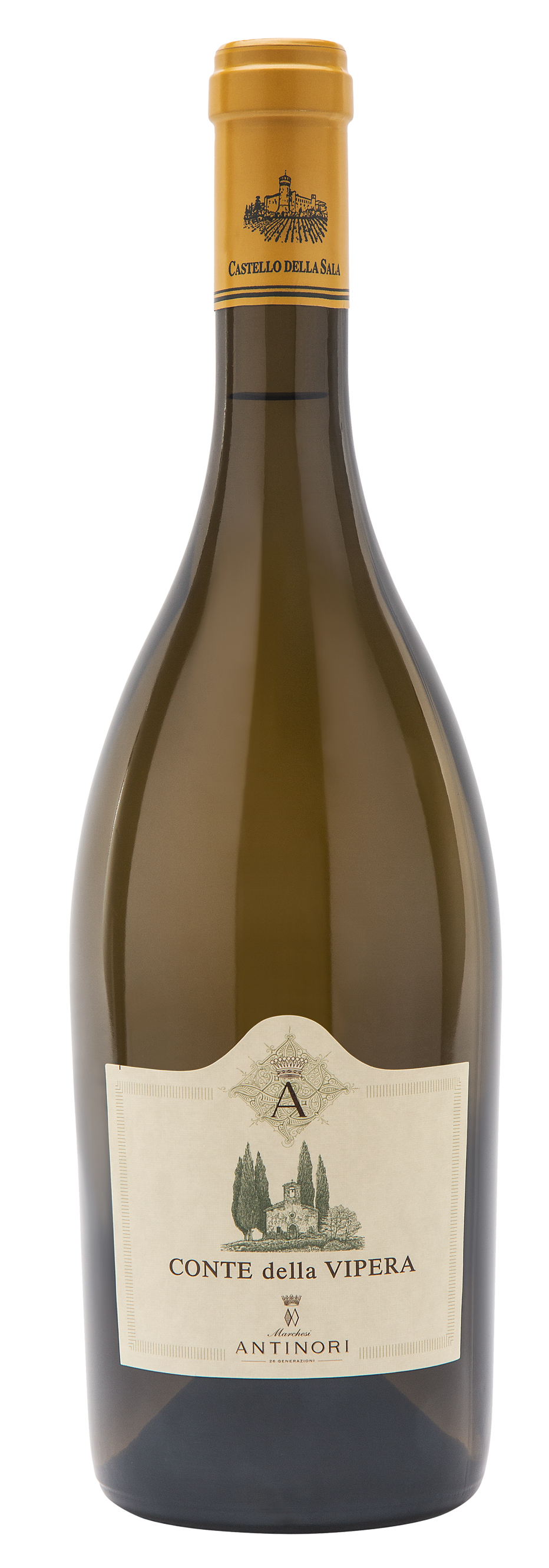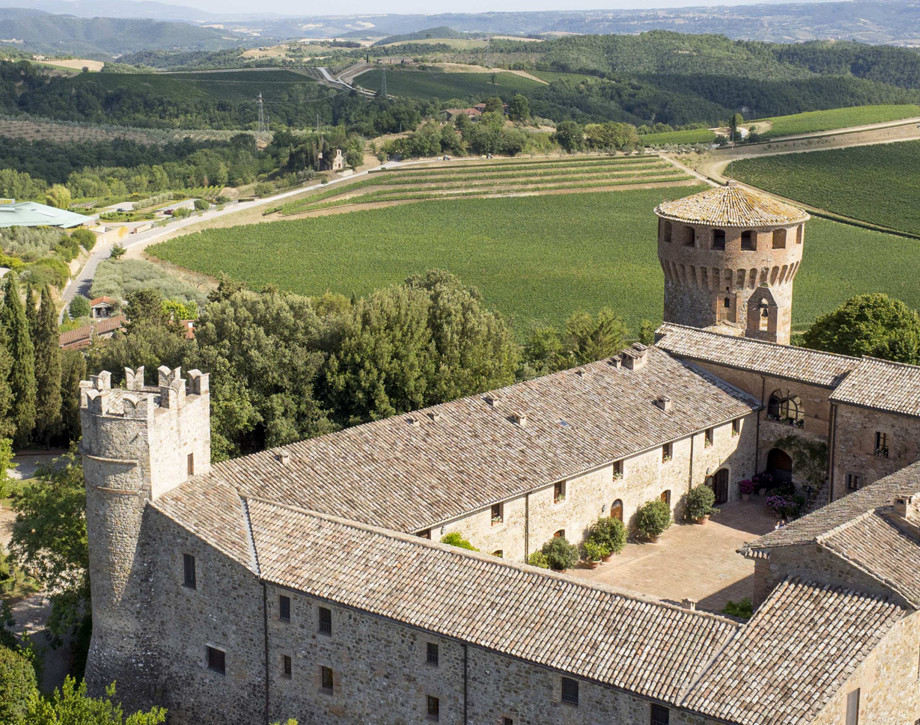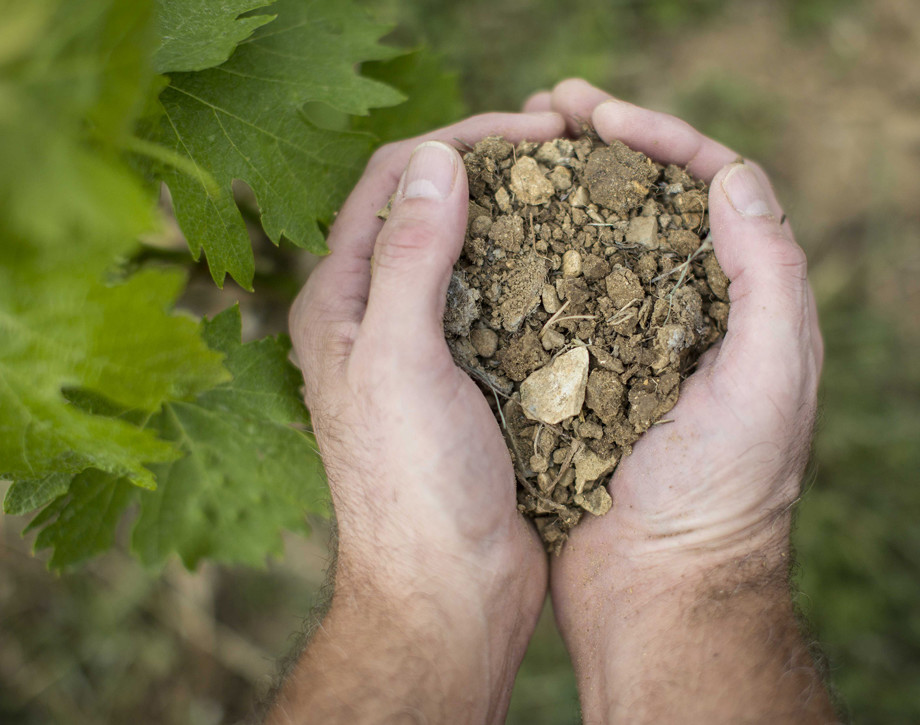Conte della Vipera

Climate
The climate of the 2016 vintage was characterized by a mild winter with regular rainfall followed by a spring season with cool temperatures which assisted a regular bud burst and flowering of the vines. A slight drop in temperatures occurred during the month of June, slowing down the growth and development cycle which came back into balance in July thanks to a warm summer with fine temperature swings from daytime heat to evening and nighttime coolness. This assisted in creating a wine with interesting aromatic notes. The picking of the Sauvignon Blanc crop for Conte della Vipera began towards the end of August, while the Sémillon, which normally reaches full ripeness fifteen days later, was picked during the second half of September.
Vinification
The vineyards utilized for Conte della Vipera are situated at altitudes which range from 750 to 1150 feet (230-350 meters) above sea level and consist in soils rich in marine fossils. The moments in which to pick the Sauvignon Blanc and the Sémillon were decided on the basis of the balance between the sugars accumulated during the growing season and the expression of the varietal aromas of the grapes. The crop, hand-picked, went immediately to the cellars where it was chilled on a conveyor belt to lower its temperature and best maintain varietal character. After a soft pressing, the must remained at 50° Fahrenheit (10° centigrade) to favor a natural static settling of the impurities. The must then went into stainless steel tanks where it fermented at temperatures held to a maximum of 61° Fahrenheit (16° centigrade). Once this operation was completed, the wine remained at 50° Fahrenheit to block the malolactic fermentation and conserve, as unaltered as possible, the characteristic aromas and flavors. The two varieties were then blended so that one could “complete” the other: fresh, bracing, lightly aromatic the Sauvignon, soft, tropical, and ample the Sémillon.
Historical Data
The vineyards selected to be utilized for the Conte della Vipera are located at an altitude between 825 and 1050 feet (250-350 meters) above sea level on soils rich in marine fossils. The wine takes its name from first proprietors of the Castello della Sala, and the label shows the 13th century Saint John’s Chapel (the Cappella d San Giovanni) situated on the estate. The first vintage of Conte della Vipera to be produced was the 1997.
Tasting Notes
A light straw yellow in color with greenish highlights, the floral and herbaceous notes first emerge to be followed by hints of white fruit complemented by pleasurable notes of citrus fruit and pineapples. The palate shows a fine balanced between structure and acidity along with a finish and aftertaste of much length and persistence.

The Wine
The wine is produced from a careful selection of Sauvignon Blanc and Sémillon. Conte della Vipera is a tribute to the original owners of the castle and its label shows an illustration of San Giovanni’s chapel (Saint John), a small chapel located on the estate.

Climate
The climate of the 2016 vintage was characterized by a mild winter with regular rainfall followed by a spring season with cool temperatures which assisted a regular bud burst and flowering of the vines. A slight drop in temperatures occurred during the month of June, slowing down the growth and development cycle which came back into balance in July thanks to a warm summer with fine temperature swings from daytime heat to evening and nighttime coolness. This assisted in creating a wine with interesting aromatic notes. The picking of the Sauvignon Blanc crop for Conte della Vipera began towards the end of August, while the Sémillon, which normally reaches full ripeness fifteen days later, was picked during the second half of September.
Vinification
The vineyards utilized for Conte della Vipera are situated at altitudes which range from 750 to 1150 feet (230-350 meters) above sea level and consist in soils rich in marine fossils. The moments in which to pick the Sauvignon Blanc and the Sémillon were decided on the basis of the balance between the sugars accumulated during the growing season and the expression of the varietal aromas of the grapes. The crop, hand-picked, went immediately to the cellars where it was chilled on a conveyor belt to lower its temperature and best maintain varietal character. After a soft pressing, the must remained at 50° Fahrenheit (10° centigrade) to favor a natural static settling of the impurities. The must then went into stainless steel tanks where it fermented at temperatures held to a maximum of 61° Fahrenheit (16° centigrade). Once this operation was completed, the wine remained at 50° Fahrenheit to block the malolactic fermentation and conserve, as unaltered as possible, the characteristic aromas and flavors. The two varieties were then blended so that one could “complete” the other: fresh, bracing, lightly aromatic the Sauvignon, soft, tropical, and ample the Sémillon.
Historical Data
The vineyards selected to be utilized for the Conte della Vipera are located at an altitude between 825 and 1050 feet (250-350 meters) above sea level on soils rich in marine fossils. The wine takes its name from first proprietors of the Castello della Sala, and the label shows the 13th century Saint John’s Chapel (the Cappella d San Giovanni) situated on the estate. The first vintage of Conte della Vipera to be produced was the 1997.
Tasting Notes
A light straw yellow in color with greenish highlights, the floral and herbaceous notes first emerge to be followed by hints of white fruit complemented by pleasurable notes of citrus fruit and pineapples. The palate shows a fine balanced between structure and acidity along with a finish and aftertaste of much length and persistence.

Castello della Sala
Castello della Sala is located in the Umbria region, not far from the Tuscan border, about 18 kilometers from the historic city of Orvieto. The Medieval castle’s property extends over an area of 600 hectares (1482 acres), 229 hectares (495 acres) are planted with vineyards at an altitude that varies between 220 and 470 meters above sea level (722/1541 feet) on the gently rolling hillsides that characterize the beautiful countryside in this area. Castello della Sala is the perfect place for growing white varieties. The vines grow in clay and calcareous based soils, rich in fossil shells, and they are well exposed to the rising of the sun with an excellent difference of temperature between day and night. The one exception to the rule is Pinot Noir, the only red variety that has found in this area ideal growing conditions to best express its full potential.

Soil
Soils rich in sedimentary deposits of marine fossils with veins of clay.


















